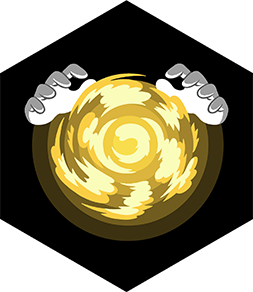Share Why You Like Math Magic Tricks
Learn and perform simple math magic tricks, practice explaining why they work, and create a short presentation to share with classmates.



Step-by-step guide to sharing why you like math magic tricks
Step 1
Choose two simple math magic tricks you want to learn.
Step 2
Gather the materials you will need from the list.
Step 3
Read or watch instructions to learn how the first trick works.
Step 4
Practice performing the first trick three times until you can do it smoothly.
Step 5
Read or watch instructions to learn how the second trick works.
Step 6
Practice performing the second trick three times until you can do it smoothly.
Step 7
Write a short explanation for each trick that says why the trick works in 2 to 4 simple sentences.
Step 8
Create a visual aid or poster that shows the trick steps and the key math idea.
Step 9
Put a short presentation script together with an introduction the tricks and your explanations.
Step 10
Practice your whole presentation aloud once using your visual aid.
Step 11
Time your presentation and make any small changes so it fits your ideal length.
Step 12
Share your finished presentation and tricks on DIY.org
Final steps
You're almost there! Complete all the steps, bring your creation to life, post it, and conquer the challenge!


Help!?
I don’t have poster board, markers, or a deck of cards listed in the materials — what can I use instead?
Use large plain paper or a tablet/smartphone screen in place of poster board, a pencil or crayon instead of markers, and make number slips from paper to replace a deck of cards or use mental math instead of a calculator.
What should I do if I keep messing up a step when practicing a trick?
Write concise, numbered cue cards for each step of the first or second trick and follow the instructions to practice that trick three times until smooth, then rehearse the whole presentation aloud once using your visual aid.
How can I adapt this activity for younger or older kids?
For younger kids pick simpler tricks, shorten each written explanation to 1–2 sentences and make a big colorful poster for the visual aid, while older kids can include a 2–4 sentence mathematical proof or algebraic reasoning and adjust the timed presentation for more depth.
How can we make the presentation more interesting or personal before sharing on DIY.org?
Add audience participation prompts into your presentation script, design the poster with step-by-step numbered panels and illustrations that show the key math idea, and record the performance to upload to DIY.org.
Watch videos on how to share why you like math magic tricks
Magic Math Trick for Kids to Learn Fast | Part 1🧮✨ | @TwinTalksWorld
Facts about mental math and math magic
✨ Martin Gardner popularized dozens of math-based tricks and puzzles in his long-running "Mathematical Games" column, inspiring many young magicians and mathematicians.
🔢 Many math magic tricks secretly use modular arithmetic or parity (odd/even) so the surprising result is actually predictable and provable.
🎭 Performing a short math trick aloud helps you remember the steps better — teaching something is one of the best ways to learn it!
🧮 Regular practice of mental math (even 5–10 minutes a day) noticeably improves speed and confidence when doing tricks and calculations.
🧠 The classic "1089 trick" makes most 3-digit numbers become 1089 after a reverse, subtract, and add — it's pure arithmetic, not mystery!
How do I run the Share Why You Like Math Magic Tricks activity?
What materials do I need for the Share Why You Like Math Magic Tricks activity?
What ages is the Share Why You Like Math Magic Tricks activity suitable for?
What are the benefits of learning and presenting math magic tricks?


One subscription, many ways to play and learn.
Only $6.99 after trial. No credit card required



